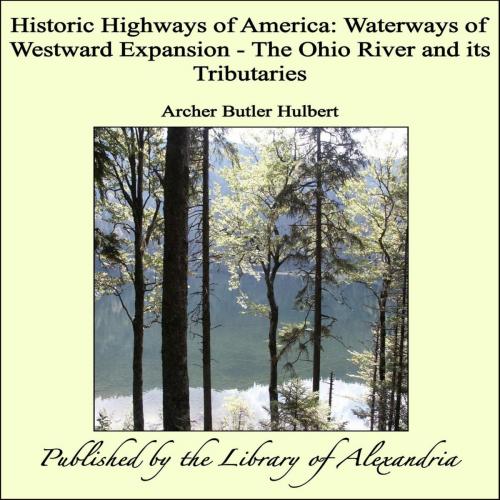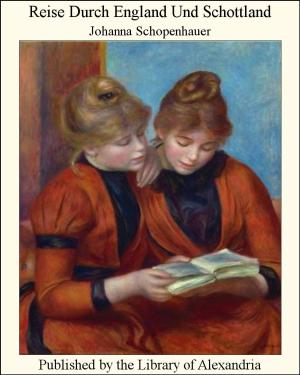Historic Highways of America: Waterways of Westward Expansion - The Ohio River and its Tributaries
Nonfiction, Religion & Spirituality, New Age, History, Fiction & Literature| Author: | Archer Butler Hulbert | ISBN: | 9781465561183 |
| Publisher: | Library of Alexandria | Publication: | July 29, 2009 |
| Imprint: | Library of Alexandria | Language: | English |
| Author: | Archer Butler Hulbert |
| ISBN: | 9781465561183 |
| Publisher: | Library of Alexandria |
| Publication: | July 29, 2009 |
| Imprint: | Library of Alexandria |
| Language: | English |
In the study of Waterways of Westward Expansion, the Ohio River—the “Gateway of the West”—occupies such a commanding position that it must be considered most important and most typical. Such is its situation in our geography and history that it is entitled to a most prominent place among Historic Highways of America which greatly influenced the early westward extension of the borders and the people of the United States. Not until a late period in the expansion era—the day of steam navigation—did the Great Lakes rise to importance as highways of immigration, and south of the Ohio River Basin there was no westward waterway of importance. The day of the keel-boat and barge was of moment in the broadening of the American sphere of influence on this continent, and nowhere is the study of these ancient craft made to so good advantage as on the Ohio and its tributaries. This monograph is devoted, therefore, to the part played by this waterway as a road into the West. The two introductory chapters, concerning Céloron and the first occupation of the Old Northwest, added to previous volumes of this series (iii, iv, v, and vi), complete the legendary and historical setting necessary for a proper view of the Ohio in the first momentous years of the nineteenth century. The occupation and filling of the southern shores of the Ohio was the story of Volume VI; the story of the filling of the northern shore is outlined in the second chapter of this book. With the position of the first colonies and settlements in the great valley well comprehended, and a conception of the origin of the different colonies and their varied types, the next logical step in our study is the rise of the river trade and its evolution. It is hardly necessary to point out to any reader of these volumes that the Ohio River was the highway upon which all of the great early continental routes focused. Washington’s Road, Braddock’s Road, Forbes’s Road, and Boone’s Road—like the Indian and buffalo trails they followed—had their goal on the shores of this strategic waterway. The westward movement was by river valleys (a fact perhaps never sufficiently emphasized) and not until the Tennessee, Monongahela, Kanawha, and Kentucky Rivers were reached were any waters found to run parallel with the social movement itself. When this goal of half a century was reached, then followed a half century of river travel that is being forgotten with remarkable rapidity. This cannot be realized until one marks out for himself the task, for instance, of learning how a keel-boat was made and how it was operated. The echo of the steersman’s voice and the tuneful note of the bargeman’s horn have faded from our valleys; and with this music has passed away a chapter of our history of vital importance and transcendant human interest
In the study of Waterways of Westward Expansion, the Ohio River—the “Gateway of the West”—occupies such a commanding position that it must be considered most important and most typical. Such is its situation in our geography and history that it is entitled to a most prominent place among Historic Highways of America which greatly influenced the early westward extension of the borders and the people of the United States. Not until a late period in the expansion era—the day of steam navigation—did the Great Lakes rise to importance as highways of immigration, and south of the Ohio River Basin there was no westward waterway of importance. The day of the keel-boat and barge was of moment in the broadening of the American sphere of influence on this continent, and nowhere is the study of these ancient craft made to so good advantage as on the Ohio and its tributaries. This monograph is devoted, therefore, to the part played by this waterway as a road into the West. The two introductory chapters, concerning Céloron and the first occupation of the Old Northwest, added to previous volumes of this series (iii, iv, v, and vi), complete the legendary and historical setting necessary for a proper view of the Ohio in the first momentous years of the nineteenth century. The occupation and filling of the southern shores of the Ohio was the story of Volume VI; the story of the filling of the northern shore is outlined in the second chapter of this book. With the position of the first colonies and settlements in the great valley well comprehended, and a conception of the origin of the different colonies and their varied types, the next logical step in our study is the rise of the river trade and its evolution. It is hardly necessary to point out to any reader of these volumes that the Ohio River was the highway upon which all of the great early continental routes focused. Washington’s Road, Braddock’s Road, Forbes’s Road, and Boone’s Road—like the Indian and buffalo trails they followed—had their goal on the shores of this strategic waterway. The westward movement was by river valleys (a fact perhaps never sufficiently emphasized) and not until the Tennessee, Monongahela, Kanawha, and Kentucky Rivers were reached were any waters found to run parallel with the social movement itself. When this goal of half a century was reached, then followed a half century of river travel that is being forgotten with remarkable rapidity. This cannot be realized until one marks out for himself the task, for instance, of learning how a keel-boat was made and how it was operated. The echo of the steersman’s voice and the tuneful note of the bargeman’s horn have faded from our valleys; and with this music has passed away a chapter of our history of vital importance and transcendant human interest















